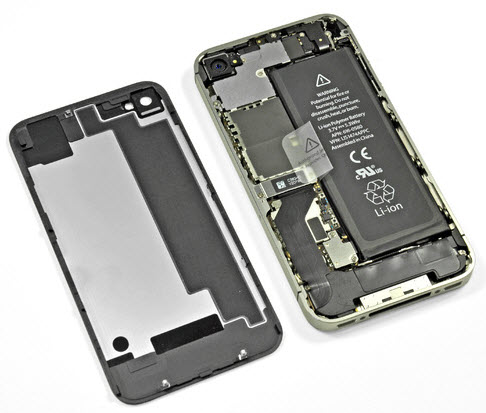Could the iPhone 5 push Li-Ion batteries to their limit?

As our portable electronic devices become more powerful, the demands they place on the power packs that supply them with energy increases. As Apple continues to to pack more and more technology into smaller and smaller smartphones, the battery is rapidly becoming the feature that will limit what the rumored, next-generation iPhone 5 is capable of doing.
Noam Kedem, VP of marketing for Leyden Energy, a California-based company that makes batteries for a variety of applications, including consumer electronics and electric vehicles, believes that the iPhone 5 will have a much larger battery than any of its predecessors, but that this might not be enough to keep the device's runtime at the same level as that of the current generation hardware.
"The iPhone 5 battery is going to have to be notably bigger than its predecessor," writes Kedem. "Even with the increase in battery’s X and Y dimensions made possible by a larger screen, the result could still be shorter battery life—in terms of run-time per charge, cycle life and calendar life".
The problem, in a nutshell, is that since Li-Ion batteries first became commercially available back in 1991, transistor density in the devices they power has increased by a staggering one thousand fold, but during that time battery energy density has only increased three fold.

The iPad 3 highlights just what a problem battery technology has become for Apple. This device has a Li-Ion power pack that is 70 percent bigger than that of the iPad 2, yet still offers a shorter runtime. If you want to extend the battery life, you're going to have to accept some trade-offs in terms of what the device can do.
It's clear that Apple is close to hitting a wall as to how much it can squeeze out of current battery technology.
Many -- myself included -- criticized Apple for fitting non-replaceable batteries into the iPhone and iPad. This does give Apple the chance to pack more battery into a device while keeping the size down to a minimum. It removes the need for the battery to have a case and connectors. The modern battery inside a consumer electronics device is little more than a bag of chemicals with a few wires coming out of it. By eliminating the need for the battery to have a hard case, connectors and the like, Apple has been able to shrink down the overall size of the battery, thus get more bang for the buck.
But even this trick only goes so far.
Kedem believes that with the iPhone 5, Apple will have to get even more creative with how it packs the electronics inside the iPhone around the battery, in order to be able to maximize space for the power pack.
On a more positive note, as electronics get smaller and smaller with each generation of iPhone, this leaves more room inside the device to be filled by the battery.
Another enemy of the battery is heat. Not just heat generated by the device when in use, but he heat produced when the device is charged.
"The higher power requirements of the new features in the iPhone 5 will mean faster discharge," writes Kedem. "Consumer impatience requires making charging happen as fast as possible, but the more powerful battery needed in the iPhone 5 will naturally take more time to charge when using the same charger as the earlier iPhones".
If you want a faster charge time, that means a more powerful charger. And a more powerful charger means more heat being produced. "Trying to reduce charge times with a more powerful charger would likely generate even more heat and further shorten battery life," warns Kedem.
Heat is such a problem with batteries that the iPad 3's Li-Ion cells contain heat spreaders to help dissipate this wasted energy and prolong battery life.
It's going to be interesting to see how Apple balances all these factors in the iPhone 5. Will the company sacrifice features for battery life? Will battery life take a hit? Will Apple give in and make a bigger iPhone? Or does Apple still have a few tricks up its sleeve for getting a little more out of the aging Li-Ion technology.
We'll have to wait and see.
Image source: iFixit.